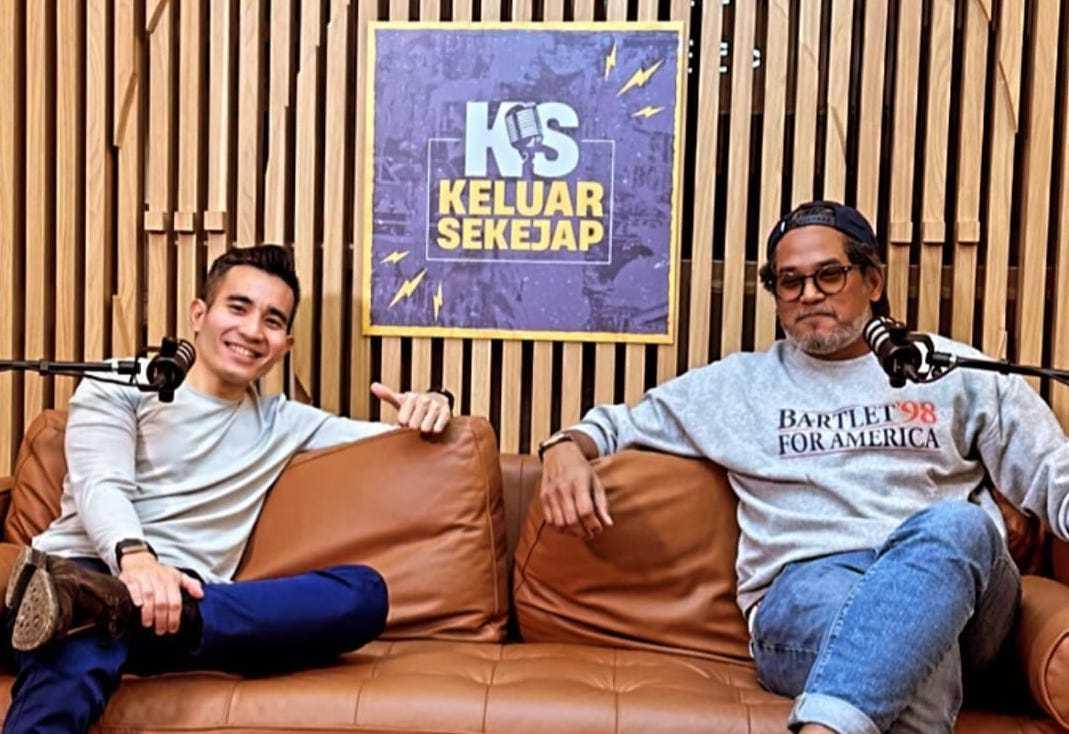After 'Keluar Sekejap', podcasts pick up steam ahead of state polls
But while some politicians have followed in the footsteps of Khairy Jamaluddin's popular 'Keluar Sekejap', not everyone has what it takes to sustain an entire podcast.
Just In
Early this year, former Rembau MP Khairy Jamaluddin was sacked from Umno, triggering speculation about his future in politics and whether he would remain relevant without the backing of a party or coalition.
Khairy, a three-time Cabinet member who had held the portfolios of health, youth and sports, and science and technology, went on to launch the "Keluar Sekejap" podcast with former Umno information chief Shahril Hamdan, who was likewise subjected to disciplinary action and suspended for six years.
The podcast, named as an allusion to the fact that they are both on a break from politics, was a hit, with its first episode scoring more than 700 views in just three hours.
Thirty-six episodes later, the podcast's YouTube channel alone has attracted close to 80,000 subscribers and millions of views. Earlier this month, the appearance of Kedah Menteri Besar Muhammad Sanusi Md Nor in a lively session garnered more than 700,000 views on YouTube within days, making it the most popular episode.
A video editor who asked to be known as Han told MalaysiaNow that podcasts in their original sense were intended as long audios.
Han, who has been in the industry for 11 years and counts political parties, cybertroopers, NGOS and activists among his clients, said that podcasts from abroad, especially the US and Australia, had added a new dimension to the traditional definition, with audio recordings accompanied by video feed of individuals or groups.
At the beginning of his career, he said, he only edited clips of political talks received through email or stored in hard disk drives.
"After social media began to pick up speed, I started editing short videos for Facebook – maybe four to five minutes long.
"Eventually, the videos became even shorter for Instagram sharing. Now, the biggest impact is on TikTok."
Low-cost podcasts
Detailing the production process for podcasts, Han said these could be done on a budget with just a good microphone and a mobile phone with high camera resolution.
"Now there are all sorts of software available for video editing," he said.
"People learn from YouTube and do their own editing."
While other politicians such as Deputy Youth and Sports Minister Adam Adli and Bentong MP Young Syefura Othman have also begun airing their own podcasts, these do not appear to be as popular as "Keluar Sekejap".
Communications expert Abd Aziz Aizam said not all politicians are able to attract the public eye.
In the case of "Keluar Sekejap", Aziz, of Universiti Teknologi Mara, said the key to success for Khairy and Shahril was the fact that neither of them had won an election or held any significant position in government.
"The edge for them is that their narrative comes across as neutral," he said.
"They also bring up a lot of facts and can put emotions aside in coming to conclusions."
Aziz said the use of podcasts also indicated that the public was no longer passive but ready to evaluate critical ideas through healthy discourse.
Han agreed that not everyone was able to run their own podcast.
"Even if they have enough money, it is the ideas and arguments they present that determines their survival," he said.
He said most podcasts are between 40 minutes and an hour plus in length.
These videos are then divided into shorter segments and uploaded on social media.
"If the entire hour is just empty talk, what is there to divide?" he said.
"But if the video is filled with ideas, five minutes is enough for two or three short clips."
Subscribe to our newsletter
To be updated with all the latest news and analyses daily.
Related Articles
Most Read
No articles found.
